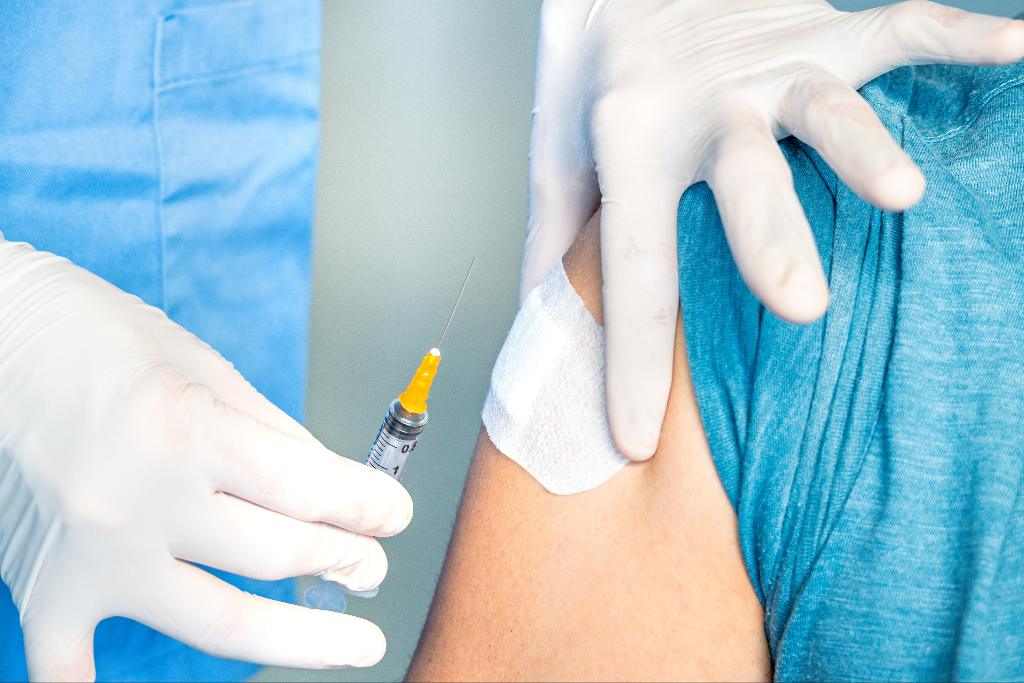If you work with patients who suffer from musculoskeletal issues, you’re likely familiar with pulse wave therapy — a non-invasive treatment that uses sound waves to promote healing and relieve pain. This type of therapy is gaining traction among physicians, chiropractors, and physical therapists because it offers a drug-free, surgery-free option for managing a variety of chronic and acute conditions.
Pulse wave therapy involves delivering sound waves through an applicator placed on the skin, typically using ultrasound gel as an acoustic medium. These low-frequency, high-energy sound waves penetrate deep into tissue, producing pressure waves that stimulate circulation and reduce inflammation. As a result, this therapy can accelerate healing, ease discomfort, and help treat soft tissue injuries, chronic pain, and other complaints.
However, not all pulse wave therapies are created equal. There are two main variations — acoustic wave therapy and shockwave therapy — each with its own benefits, applications, and limitations. Understanding the differences can help you determine which option is most suitable for your patients.
What Is Acoustic Wave Therapy and How Does It Work?
Acoustic wave therapy, often referred to as radial therapy, uses high-frequency, low-intensity sound waves. These waves do not penetrate deeply into the body, making acoustic wave therapy a gentler and more surface-focused treatment option. It’s particularly ideal for patients who may not tolerate more aggressive approaches.
The waves are delivered through a handheld applicator and target the outer layers of tissue, promoting local circulation and providing mild stimulation that encourages tissue repair. Because of its non-invasive nature and surface-level penetration, acoustic wave therapy is often associated with general wellness benefits such as reduced tension and improved relaxation.
Benefits and Common Uses of Acoustic Wave Therapy
Acoustic wave therapy is most effective for superficial soft tissue conditions. Common uses include:
- Plantar fasciitis
- Bursitis
- Tennis elbow
- Light scarring and stretch marks
- Erectile dysfunction (ED)
While it can address the root causes of certain conditions, acoustic wave therapy is generally used in conjunction with medications, physical therapy, or other treatments. It requires multiple sessions — typically between 6 to 12 treatments — for optimal results. Sessions last under 30 minutes, and patients may begin noticing improvement within a few days.
One advantage of acoustic wave therapy is its affordability. It also has little to no side effects, making it a low-risk treatment option for many patients.
What Is Shockwave Therapy and How Does It Work?
Shockwave therapy delivers high-frequency, high-intensity sound waves that penetrate much deeper into the body than acoustic waves. These waves move rapidly through tissue and generate a mechanical force known as a “shockwave.”
This deeper energy stimulation makes shockwave therapy suitable for more complex and hard-to-reach musculoskeletal issues. It enhances tissue regeneration, disrupts chronic inflammation, and helps initiate the body’s natural healing response at a cellular level.
Benefits and Common Uses of Shockwave Therapy
Shockwave therapy is often chosen for more resistant or deep-tissue conditions, such as:
- Bone fractures and delayed healing
- Chronic pain
- Plantar fasciitis
- Tendinopathy
- Bursitis and shoulder pain
- Erectile dysfunction (ED), in some cases
Because of its intensity and tissue reach, shockwave therapy often works as a standalone treatment. It can also be combined with physical therapy or medication when necessary. Many patients report feeling relief almost immediately after a session, and fewer sessions are typically required compared to acoustic wave therapy.
That said, this stronger form of treatment may not be suitable for everyone. Potential side effects include temporary bruising or skin irritation. Patients with blood-clotting disorders, those taking anticoagulants, individuals with pacemakers, or pregnant patients may not qualify for traditional shockwave therapy.
However, newer advancements in the field — such as SoftWave Therapy — offer a gentler, non-invasive alternative. This form of shockwave therapy delivers broader, unfocused energy waves that target both wider and deeper tissue zones with minimal discomfort and reduced risk of side effects. It opens the door to treating a broader range of patients safely and effectively.
READ: SoftWave vs Shockwave Technology Explained
Key Differences Between Acoustic and Shockwave Therapy
While both acoustic wave therapy and shockwave therapy are forms of pulse wave treatment, they differ in energy level, depth of penetration, and clinical applications:
| Feature | Acoustic Wave Therapy | Shockwave Therapy |
| Wave Intensity | Low | High |
| Tissue Penetration | Surface-level | Deep tissue |
| Treatment Areas | Soft tissue and skin-level concerns | Musculoskeletal, tendon, and bone-related issues |
| Sessions Required | 6–12 | Fewer, often noticeable after 1–2 |
| Side Effects | Minimal | Possible bruising or skin irritation |
| Cost | Lower | Higher |
Understanding these differences allows providers to select the right option based on the severity, location, and responsiveness of a patient’s condition.
Why SoftWave Therapy Stands Out
For providers seeking a gentler but highly effective form of shockwave therapy, SoftWave Therapy offers a powerful alternative. Its patented broad-focused technology delivers sound waves across a large treatment area, reaching both superficial and deep tissues to activate the body’s natural healing response — all with minimal discomfort.
What Makes SoftWave Different
- Broad-focused energy coverage (7 cm x 12 cm zone)
- Treats wide and deep areas in one session
- No needles, anesthesia, or medication required
- No known side effects and reduced treatment frequency
- FDA-cleared for: Muscle pain relief, Improved circulation, Connective tissue activation, Burns, and diabetic ulcers
With the SoftWave Gold Li-Series, practices can treat a wide range of musculoskeletal and soft tissue conditions more comfortably and efficiently. It’s a non-invasive, clinically validated solution that delivers real results — often when other treatments haven’t worked.
Explore the BEST Shockwave Therapy Machine for Providers
Which Option Is Right for Your Patients?
Both shockwave and acoustic wave therapies are non-invasive, same-day treatments that are safe for most patients and highly effective at relieving pain, reducing inflammation, and supporting tissue healing. However, choosing the right modality depends on the depth, severity, and responsiveness of the condition being treated.
Acoustic wave therapy is often best suited for surface-level injuries and mild soft tissue issues. Shockwave therapy — especially advanced systems like SoftWave — can target deeper tissues, deliver faster results, and often stand alone as a complete treatment solution.
Each patient’s case is unique, and understanding the difference between these therapies helps ensure you’re delivering the most effective care possible. For stubborn, slow-healing conditions or patients seeking relief without surgery or medication, shockwave therapy can be transformative.
Bring SoftWave Therapy to Your Practice Today
If you’re ready to expand your treatment offerings and help patients achieve meaningful relief from pain and inflammation, SoftWave Therapy provides a solution that’s both clinically proven and patient-friendly. With its broad-focused technology and deep therapeutic reach, the SoftWave Gold Li-Series empowers providers to treat musculoskeletal pain, soft-tissue injuries, diabetic ulcers, and more — all without side effects or downtime.
At SoftWave, we support practices with the technology, training, and clinical guidance needed to succeed. Whether you’re treating athletic injuries, chronic pain, or non-healing wounds, SoftWave Therapy is a trusted, non-invasive option that delivers results when other treatments fall short.
Start the conversation today to learn how you can become a SoftWave provider and bring this next-generation therapy to the patients who need it most.



